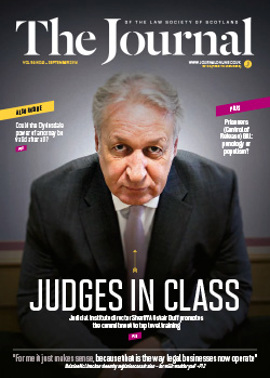Doping: raising the stakes

The 20th Commonwealth Games in Glasgow passed with declarations of the “greatest Games yet”, setting a very high bar for Australia’s Gold Coast in 2018. For two Welsh athletes, however, the joy of the Games was missed due to suspected anti-doping infractions and investigations, potentially leaving them facing significant bans from all involvement in sport; and a handful of other athletes regrettably failed doping tests and had their results nullified.
As most sports in Scotland, and indeed worldwide, subscribe to the World Anti-Doping Code, consistency of treatment of suspects is key to the fight against doping. This is closely monitored across all sports, as the application of the code’s principles forms an important anti-doping jurisprudence. The code itself has evolved since its introduction in 2004, being revised in 2009 and 2013, and changes coming in with effect from 1 January 2015 are some of the most important to date, widening its scope and increasing the severity of its application.
Complicity and prohibited association
Two important new rule violations are to be introduced, including “complicity”, whereby involvement in an anti-doping rule violation, such as helping an attempted cover-up or an attempt to avoid detection, will be sanctioned equally with the violation. “Prohibited association” will also be a new standalone violation, to prevent people associating with a person such as a coach, doctor or physiotherapist found guilty of a violation or criminal offence. This will deter athletes as they may face a ban of up to two years.
Increased sanctioning powers
Sanctions imposed on athletes attract comment or debate. Some commentators question why sanctions of two years should be imposed on athletes with short careers when the problem may be contamination, or an athlete being misled, rather than deliberate cheating. But many athletes argue that such is the historical problem with doping, and given athletes’ responsibility to compete clean, sanctioning should be more severe, even life bans for first offences (despite the Court of Arbitration for Sport’s 2012 ruling that the British Olympic Association policy of lifelong exclusion from selection was unlawful).
The 2015 World Anti-Doping Code has taken steps to ensure that more significant sanctioning measures are available, with first-time bans of up to four years as standard for serious violations and calculated methods, such as steroids, growth hormones, EPO, or blood transfusions, the type of offending so publicly admitted by cyclist Lance Armstrong. An important aspect of doping control is ensuring athletes submit to testing out-of-competition, being the key time that they may be tempted to dope in order to prepare for competition. Elite athletes must provide notice of where they may be for an hour each day, seven days a week, in order that they may be tested unannounced at any time (the “whereabouts” requirement). To strengthen the response to athletes found to have refused or evaded sample collection, bans of up to four years will be available.
Contaminated products
While the code is certainly becoming tougher on deliberate violators and those who conspire to offend the spirit of fair competition, it has set out to try to deal better with the difficulty of contaminated products, by allowing athletes who can establish that there was no “significant fault or negligence” to be sanctioned with only a reprimand, if circumstances justify this. Athletes who plead this defence will only succeed in limited circumstances and where anti-doping panels are persuaded by clear evidence that the positive test arises from contamination, which can be problematic, but the availability of a reprimand only will make athletes and their coaches, physiotherapists and medical support staff be ever more careful about recording what an athlete is eating and ingesting.
Challenges
While doping violations sadly continue across sport, the forthcoming changes demonstrate the code fighting to ensure sport is as clean as possible. However challenges will continue, not merely to decisions taken in respect of its application, but also to some of the concepts in the code itself. For example, arguments such as challenging on the basis of privacy and data protection laws have been mooted by opponents of the “whereabouts” requirement. As the code becomes, on the face of it, tougher and more onerous, further challenges are likely.
In this issue
- Keep the job going?
- Asbestos and the state of knowledge
- Damned lies and bogus statistics
- Sorry seems to be the hardest word
- With a fair RWIND
- Planning land reform: the land of Scotland and the common good
- Reading for pleasure
- Opinion: Joanne Gosney
- Book reviews
- Profile
- President's column
- Roadshows roll out
- People on the move
- Outcomes, or own goals?
- Power and authority
- Licensed to reoffend?
- Raising the bar for the bench
- Title insurance – under the bonnet
- Working for Uncle Sam
- Family failings
- Shopping with protection
- Private sector progress at public sector expense?
- Rent review: the storm before the calm
- Doping: raising the stakes
- New financial services arm for ILG
- Under starter's orders
- Childcare: the benefits
- Law reform roundup
- Follow the leader
- Five years from when?
- Ask Ash
- Take the money?
- From the Brussels office
- Beware the bank calls
- Mentoring – why?






